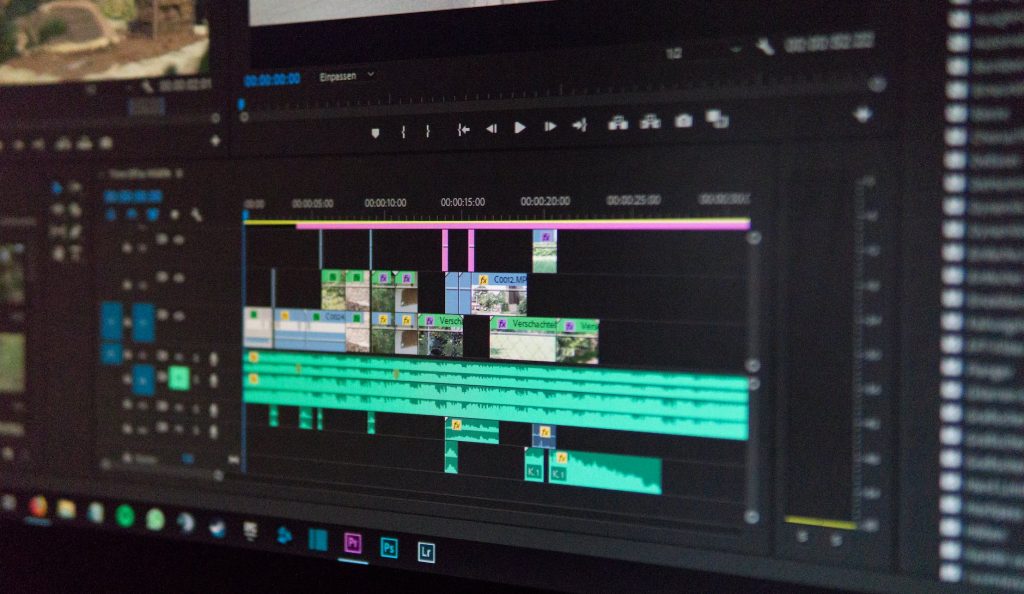Thirteen months ago I embarked on an entrepreneurial journey to start a wholesale Amazon FBA business. The joy and excitement you get from selling your first product is amazing. It is such a great feeling to see all your preparation and hard work finally lead to sales at the infamous “Buy Box”. I had purchased a press-on nail glue that had great customer reviews, and I made 9 sales my first day it listed. I then made at least one sale a day in the first two weeks. I was undoubtedly very eager and excited at starting my new Amazon business.
While you may have heard the many success stories of Amazon sellers making it big on this enormous e-tail platform, sadly most have fallen along the way and are no longer to be found. In fact, it has been estimated that more than 90% of Amazon sellers do not succeed long term. I was in shock when I heard the statistic. That’s more than half the people who sign up for a seller account and actually list a product, let alone those that ever get on a listing at all!
It has become more and more difficult to jump on Amazon nowadays and just start selling. FBA sellers must receive approval by Amazon to list brand name beauty topicals, grocery items, automotive supplies, and many more types of inventory. As Amazon’s platform continues to take on new third-party sellers who don’t always follow the rules (or haven’t even read the rules), it has become even more strict in allowing who can sell, what can be sold, and how it can be sold.
It is definitely not an easy decision to make, to up and leave your Amazon FBA dream. No one wants to admit failure, especially after spending hours of training, and hundreds to thousands of dollars in start-up costs. I empathize with those who take their bets off the table and fold; I know too well how this feels when I crossed that same bridge.
So why are so many sellers leaving the Amazon gravy train? I mean, all you have to do is buy some inventory, send the goods to an FBA warehouse, answer the odd customer query and watch the money roll in, right? Sounds too good to be true. Yet for every seller who swears that FBA is the best business decision they have ever made, I can guarantee you that there’s another ten who deeply regret it. By no means do I want to discourage every new seller out there, but people should be aware of what it really takes to succeed as a long term seller and not just follow the hype.
The reason we even consider taking the risks with Amazon is that we see a potential payoff for stepping out and entering this rapidly evolving marketplace. I applaud those who got in early and have made a comfortable living. The Amazon giant is a complicated matrix to maneuver, therefore, I will outline a few of the main reasons why people (like me) have left FBA for good, and the lessons I learned when the blinders came off.
Lesson #1: Choosing the Wrong Product
Product selection is perhaps the NUMBER 1 reason people fail in Amazon FBA. A new seller may rush through the first part of doing product research and pick the first product that calculates with a margin, and is readily available. Then when they go to list the product they realize the product is not selling well at all. They learn soon enough that there is either too much competition for the buy box, or barely any demand at all. Or even worse: they did not check to see if the product was being “sold and shipped by Amazon” itself!
I spent my first 4 weeks on product research alone as there are a number of criteria to look for when picking the right product to sell on Amazon FBA. I invested in product research tools, the most popular being Keepa and AMZScout. I looked high and low for name brands that would provide me at least a 10% return-on-investment, and ones that Amazon itself was not dominating. I wanted to keep my costs low, so I was initially seeking products less than 5 lbs in weight, and had started to look into beauty and hygiene products first, which seemed to fit the criteria I was trained to look for in my costly Amazon course.
In this stage of the game in 2020 (FBA started in 2006), it is no longer easy to find those household brands that you can just list and sell on Amazon without considerable competition. No longer can you engage in ‘retail arbitrage’ and buy goods from local stores to list on FBA with just a simple store receipt. Similarly, Amazon has partnered with so many brands, that they get the best wholesale deals and as much inventory as they want to dominate any listing on their platform. They’ve got round-the-clock staff sourcing out products to fill more and more listings. That is tough to beat!
I know this for sure as I researched hundreds of North American brand name products. It is no wonder why so many sellers try the Private Label route instead. Yet with private label you face a lot of competition with sellers from China and they’re margins are incredible! So researching your product selection is critical.
The salon nail glue I bought wholesale from a small brand owner had great customer reviews. It seemed so promising with its sales history and Best Seller Rank. However, that all changed when more and more eager sellers jumped on the listing (soon to be 20 of us). FBA sellers quickly began penny-dropping the price vying for that buy box. Soon no one was making any profit as the listing plummeted down $5.00 within four short weeks! The BSR was still great, but after Amazon’s fees, no one was making any more profit.
I asked myself, “Why the heck would any seller want to lower their price when the product was selling just fine at $8.99 with great profit margin?” Yet this seems to happen far too frequently. You enter a listing and as more sellers come on board they start competing for that buy box. It can be maddening when things take a turn for the worst. With experiences like this, it is easy to see why so many sellers fear their competition tanking the prices of their inventory and losing their return-on-investment.
What I learned from this was experience is that you want to spread out your sales with products across different categories (there are 30 of them). All the seasoned sellers do this. However, this is not an easy task, in fact, this is where many new sellers get stuck in the mud.
If you want to grow your Amazon business long term, you need to source for a variety of products, maybe even products that are considered ‘oversized’ (e.g. golf clubs). Higher ticketed goods seem to have less competition too. However, these decisions will depend largely on your budget, as the heavier or larger the product, the more expense for shipping and storage.
Lesson #2: Choosing the Wrong Suppliers
When it comes to “vetting” wholesale suppliers, you not only want to ask for their most current inventory spreadsheet, but you want to find out what their experience has been, if any, working with Amazon FBA sellers. This will give you huge insight into how well they serve this market. Most suppliers will have a Minimum Order Quantity (MOQ) before taking on any new customer orders. Some suppliers will no longer work with FBA sellers based on a bad previous experience, and if you come across one, just move on.
You won’t actually know how well a supplier’s service is until you get working with them and starting building a relationship with their key sales people. You’d be amazed how much more you can learn from their experience alone. If you’re a serious buyer and take action, they will likely answer your future calls and provide you better deals later on. Just don’t expect good wholesale deals as a new account, unless you’re spending at least $1,000 or more on inventory (or your competition will get their hands on those better deals).
After contacting dozens of suppliers in the U.S.A, I realized that most carry the same brands that Amazon itself is selling, which eliminated a lot of suppliers for me because you can’t compete with the Amazon ‘giant’ in their own marketplace. The wholesale price greatly matters when calculating your margins. It was difficult for me to find decent wholesale prices if the quantity of the order was too low, especially when you want to ‘test out’ how well the product sells before making a bigger investment.
Lesson #3: Ungating & Account Suspension Issues
When you start selling on Amazon, make sure you learn the rules — what you can and cannot do. If you violate certain Terms of Service, and are not maintaining the standard that has been set, Amazon can and will shut your account down. I’ve read too many dreadful stories of sellers’ accounts getting suspended as it seems to be common practice now. Selling inauthentic or restricted products, as well as dropshipping products in without a proper invoice, will get your account suspended for sure.
Struggling to get out of an account suspension is another reason why sellers lose their business and fail. Going through the appeal process is a real hassle and can take weeks on end (if it even gets approved at all). Be prepared to hire help if you don’t know how to write a Plan of Action to reinstate your account. Learning from others who have had their accounts suspended will keep you on your toes. If you break the rules on Amazon (whether you know it or not) — watch out!
Although I never had my account suspended, I struggled with getting “ungated” in certain product categories. I was not expecting to have my products applications unapproved after starting out. No matter how I tried to resolve the problem through Amazon Seller Support, it became one disappointing experience after another.
I had provided a proper invoice as well as product photos with legitimate licensed suppliers, and still couldn’t get ungated for a few simple brand name products. Imagine the embarrassment telling your supplier that their invoice wasn’t approved by Amazon! The deal falls through and you have to pull out, or you’re stuck with hundreds of goods you may have to sell elsewhere. Totally out of my control!
Lesson #4: Facing Burnout (This is Not a Part-Time Job)
Burnout is another major factor Amazon sellers fail at this business. There is a lot to grasp, on and off the platform, and a lot of product research to be done. You might start out strong and see some early profits like I did, but then you quickly find out just how much energy and effort will be required to maintain the same level of sales and profits, especially when you need to diversify your product range.
Perhaps you’re waking up early or staying up late to try and break through to the next phase, while making many personal sacrifices. This is not an easy business to run, especially if you have a full time job on top of it all. I don’t understand how anyone can do Amazon part time as there are many facets to this matrix.
If you’re going to succeed long-term in FBA and avoid burnout, you have to realize you cannot be the only one to do everything in this business. Some aspects will need to be outsourced. If you don’t outsource help, you end up taking on the minimum wage tasks that won’t necessarily lead you to the real focus of your business – to source out more and more products that will make sales and profit!
This was a struggle for me also, as I wanted to keep applying everything I learned in my training course, yet, I was quickly overwhelmed by the number of tasks and data that are involved with Amazon FBA. Although this adds extra expense to your start-up costs, here’s a few examples of tasks you may want to outsource to a virtual assistant:
• Packaging and prepping product bundles (hire an FBA Prep Center)
• Product and supplier research
• Supplier inventory spreadsheet analytics
• Someone to vet potential suppliers and compare pricing
• Setting up advertising on Amazon for your private label product
Final Thoughts
This probably isn’t the news you wanted to hear – the reasons why your Amazon business could fail. I empathize completely if you cannot give up on the dream of running your own online business. No one wants to focus on the negative. We would all much rather hear the success stories – all the money you can make, the big house or brand new car you will buy with your profits, how fruitful it all is, and so on.
I recommend you decide early on if Amazon FBA is really the online business for you, or if you’ve assessed all your options. Pick the best option that suits your vision, your goals and your budget. The current success rate of Amazon FBA may not be in your favor, but then again, there are risks involved in any new business venture, online or offline. I myself prefer to operate a business that I have full control of and not play in someone else’s sandbox. There are definitely other options to consider that are quite lucrative and way less competitive.


